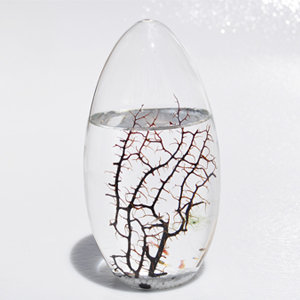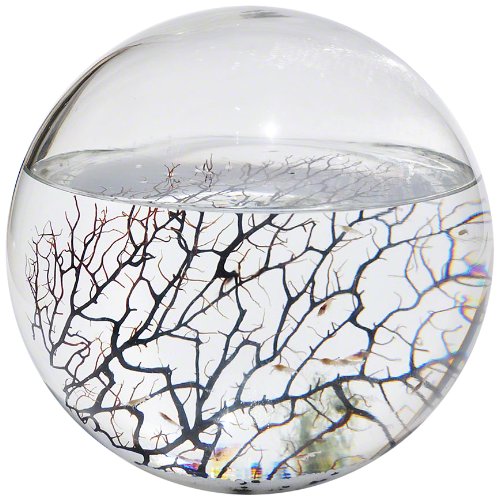How To Become More Self-Sufficient Without Starting a Full-Blown Farm…
Want to start preserving your harvest, making your own soap, or building a backyard root cellar — but not sure where to begin? “Homesteading Advice” gives you instant lifetime access to 35+ practical homesteading books on food preservation, veggie gardening, DIY natural cleaning products (save over $250 per year with this skill alone), brewing, off-grid energy, and a whole lot more…
Click Here To Check It Out Now!
The Original EcoSphere is the world’s first totally enclosed ecosystem – a complete, self-contained and self-sustaining miniature world encased in glass. Be wary of inferior and lower quality imitations. Easy to care for, an EcoSphere is an incredible learning tool that can provide powerful insights about life on our own planet… and provide a glimpse of technology that’s shaping the future of space exploration…
The World’s First Totally Enclosed Ecosystem…How cool is this. Get more information here…https://www.ecosnippets.com/environmental/totally-enclosed-ecosystem/
Posted by Ecosnippets on Tuesday, December 15, 2015
Inside each EcoSphere are active micro-organisms, small shrimp, algae and bacteria, each existing in filtered sea water. Because the EcoSphere is a self-sustaining ecosystem, you never have to feed the life within. Simply provide your EcoSphere with a source of indirect natural or artificial light and enjoy this aesthetic blend of art and science, beauty and balance. Because the living organisms within the EcoSphere utilize their resources without overpopulating or contaminating their environment, the EcoSphere requires virtually no maintenance…

But an Ecosphere is much more than a scientific breakthrough – it is a work of art. A living treasure to own or give to someone special. Each EcoSphere is carefully crafted to achieve an aesthetic, meditative beauty that can soothe any environment, including home, classroom or office. Our ecosystems demonstrate in a most simplistic way the interdependence of animal and plant life with Earth’s most precious element – water. The EcoSphere have been called science projects, the world’s lowest maintenance pets, or closed aquariums. They are in fact developments of space age technology initiated by NASA.
What is a Closed Ecosystem?
Closed ecological systems are ecosystems that do not rely on matter exchange with any part outside the system. Although the Earth itself fits this definition, the term is most often used to describe much smaller manmade ecosystems. Such systems are scientifically interesting and can potentially serve as a life support system during space flights, in space stations or space habitats. In a closed ecological system, any waste products produced by one species must be used by at least one other species.
How were EcoSpheres Invented?
The EcoSphere is the result of technology developed by two scientists, the late Dr. Joe Hansen and the late Dr. Clair Folsome at NASA’s Jet Propulsion Laboratory in California. NASA was researching self-contained communities for space explorers to live in during long-term space flights. Out of this research came the EcoSphere.
NASA had two programs that benefited from the discovery: Mission to Planet Earth, aimed at studying Earth’s environment, and the Space Program. If NASA could figure out how to sustain life in a closed environment, perhaps they could build space stations that would help in exploring our solar system… and perhaps one day, help us live somewhere other than Earth.
What is in the EcoSphere?
Along with shrimp, there is algae and filtered sea water. The EcoSphere also contains a sea fan (the non-living, branch like material), decorative shells, and lightweight gravel as a part of the working ecosystem. The sea fan and gravel provide surface areas for the algae and microorganisms to grow.
How do EcoSpheres Work?
The EcoSphere is a tiny working model of the Earth. It contains the same essential elements that are found on our planet- air, water, life (algae, microorganisms and shrimp) and land (gravel and sea fan). Life functions in the EcoSphere just as it does on Earth.
The shrimp live by consuming the algae and breathing oxygen in the water. If you watch them closely, you will see them feeding on the algae and picking bacteria off the sea fan and lightweight gravel in the EcoSphere. The byproduct of which is shrimp waste and carbon dioxide to be broken down by bacteria and converted into nutrients for the algae.
The algae survives by converting the carbon dioxide and light into useable oxygen which the shrimp will then breathe. The shrimp can also eat their own shed exoskeletons. Nothing in the EcoSphere goes to waste. Thus the EcoSphere is a perfect model of a balanced ecosystem where all inhabitants provide for each other to sustain a living environment.
Do the Animals and Plants Reproduce?
Reproduction of shrimp does occur in some EcoSpheres, but this is uncommon. The shrimp that are in the EcoSphere have purposely been chosen because they do not exhibit aggressive behavior towards each other. The algae and bacteria in the EcoSphere continuously reproduce. In fact, as time goes by, you can expect changes in the algae population in your EcoSphere.

